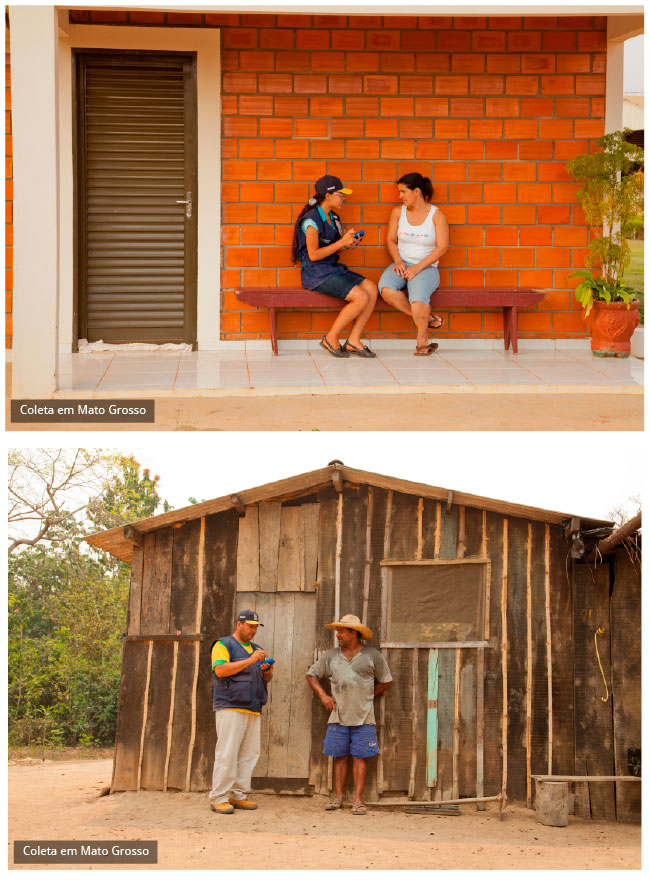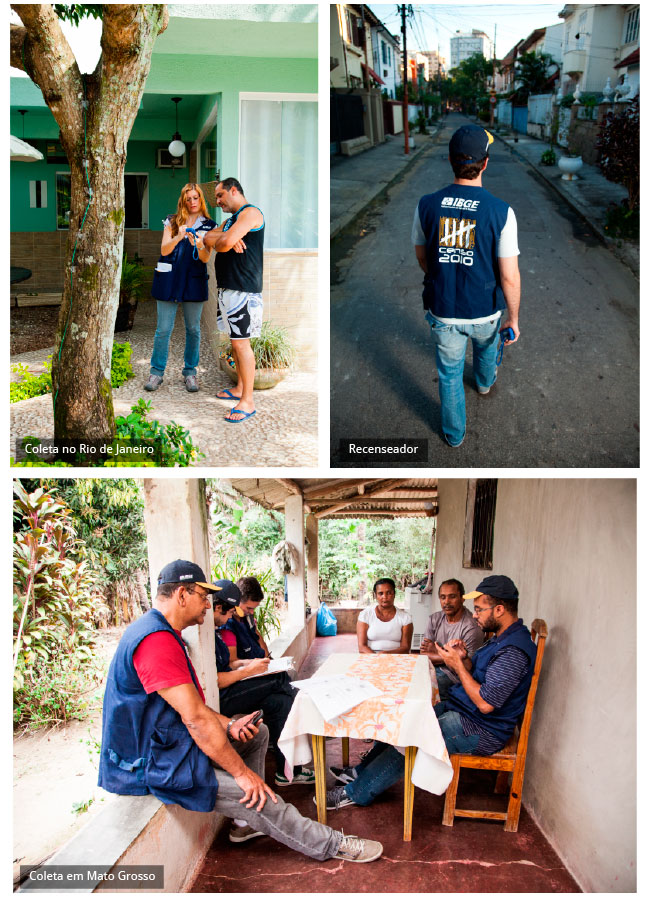2022 Census
Get to know the History told by the census in the last 150 years
The start of the 2020 Population Census, scheduled to take place within less than 100 days, will be an occasion to celebrate the 150th anniversary of our first Census.
April 25, 2022 10h00 AM | Last Updated: April 27, 2022 11h06 AM

The start of the 2020 Population Census, scheduled to take place within less than 100 days, will be an occasion to celebrate the 150th anniversary of our first Census. Conducted during the Empire period, in 1872, the first census survey asked, among other things, if the respondent was “free” or “slave”; at that time, paper forms were sent all over the country on the back of donkeys. Due to political troubles, the Census was suspended on three occasions: 1880, 1910 and 1930.
Created in 1936, the Brazilian Institute of Geography and Statistics (IBGE) conducted its first Census in 1940 and has been responsible for eight of the 12 Censuses conducted so far, with visits to all countries in the country always prepared with statistical rigor in order to portray Brazil by providing necessary information required to the understanding of its reality and the exercise of citizenship.
1872
COUNTING SUBJECTS OF THE EMPEROR
BRAZILIAN POPULATION
residents
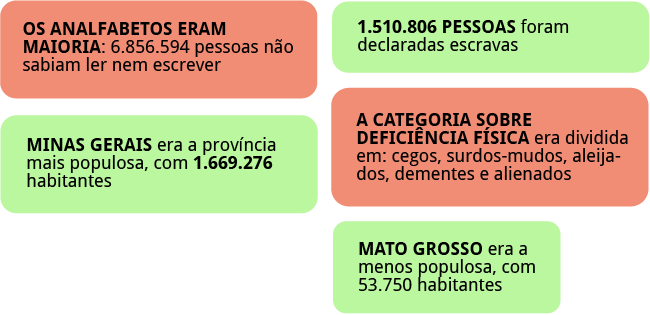
Brazil was a monarchy governed by Don Pedro II, slavery was still a reality and the easiest way of traversing the Brazil, a country of continental dimensions, was on the back of a donkey or horse. This was the background of the first Census, in 1872. The conduction of a census had been provided for in a law promulgated in 1870, which created a General Statistical Directory to conduct the survey. The data set for data collection was August 1st, 1872 and the enumerators went into the field to hand in forms or to fill them out, in case of illiterate respondents (almost 70% of the population at the time).
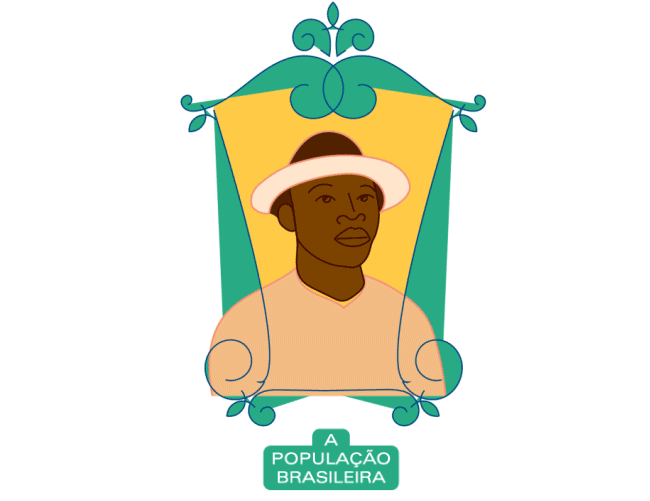
In spite of being very simple, the questionnaire translated people’s reality at that time: the enumerator would ask the householder’s name, their age, sex, marital status, level of schooling, also if the person was free or slave, their religion, occupation and if they had any visible physical impairment. All the material collected was sent to Rio de Janeiro four counting that lasted four years. Consolidated figures of the 1872 Census resulted in a total of 26 volumes, with data from each province and of the Neutral Municipality (Rio de Janeiro). In the video below, D. Pedro II proposes the creation of the first census in Brazil (scene from the soap opera "Nos Tempos do Imperador/In the Empire Period").
1880
THE CENSUS NOT CONDUCTED BY THE EMPIRE

The relatively successful 1872 Census, the first one in Brazilian history, should have been an incentive for the empire to make additional efforts aiming at improving statistics in the country. What did happen, nevertheless, was the dissolution of the General Statistical Directory by means of a decree signed in 1879. As a result, the 1880 Census was rescheduled for 1887 and, was eventually nothing more than a project. The Empire would be overthrown two years later.
1890
FIRST CENSUS OF THE REPUBLIC
BRAZILIAN POPULATION
residents

“Enumerating all the residents of the Republic of the United States of Brazil, wherever and in whichever household they are.” That was the objective of the First Census of the Republic, conducted on December 31, 1890. The operation demanded, from the National Press, 5.3 million maps, 45 thousand instruction leaflets and 50 thousand booklets, among other types of material – but not all that reached their destination in time.
The questionnaire would be sent to the householder 15 days before the base date (Dec 31,1890) to be collected, already filled out, on January 10. However, in some states, bulletins were lost and, in others, they were not even administered. Counting was characterized by slowness. Five years after data collection, none of the states had finished counting the results. Only in 1900, very close to the following operation, were the final results finally released.

1900
CLOSING THE 19TH CENTURY
BRAZILIAN POPULATION
residents

The 1900 Census was conducted by a General Directory of Statistics (DGE) which was still reduced to a minimum staff. That was the third general Census edition and the first one after the promulgation of the Republic’s Constitution. The operation started on December 1900, but the insufficient number of professionals and disorganization were the main characteristics of this edition. In many districts the census service was not performed and some locations did not return the bulletins to the Directory.

The first results – released in January 1901 – were those of Rio de Janeiro, but the operation at the capital had to be repeated due to data deficiency. Final results came out in 1907, under the title “Enumeration of 20 States in Brazil – General Summary,“ and that closed census statistics in the 19th century.
1906
EXTRAORDINARY CENSUS
In compliance with an order by mayor Pereira Passos, Rio de Janeiro (former Federal District) decided to conduct an enumeration out of the decennial period. In spite of not having national coverage, this study became important because it marked the start of “Brazilian census modernity“, in the words of professor Nelson Senra, researcher at the IBGE.
In the video below, he explains novelties presented by the 1906 enumeration, such as information secrecy, hiring of sanitarian demographers to interpret the figures and uses of graphs and tables in dissemination to facilitate understanding of results.
1910
RIOTS AND CURTAILED AUTONOMY PREVENT THE CENSUS

The third Decennial Census of the Republic should have been started on December 31, 1910. Something new about it would be the protection of information used for statistical purposes, which has been in effect so far. The law even indicated that forms with reports by people should be incinerated right after being checked and counted. Besides the population census an “investigation of the economic elements in the country“ would also take place. But the turmoil in Brazilian politics and the curtailment of autonomy affecting the General Statistical Directory prevented the survey from happening.
1920
STATISTICS ON DISPLAY
BRAZILIAN POPULATION
residents

Due to the agitated enumerations in 1890 and 1900 and the non-existing Census of 1910, the 1920 General Enumeration had an additional mission: to deal with the lack of good statistical data. A solution to this deficiency was constantly being claimed for by society and, above all, by the press. The main argument was that the one hundredth anniversary of the Independence of Brazil, celebrated in 1922, was getting close and the country could not count on figures to portray its reality. Only in January 1920, same year of the Census, did the National Congress approve a law on this issue and president Epitácio Pessoa sanction it.

Sanitarian Bulhões Carvalho, the doctor in charge of the General Statistical Directory (DGE), was responsible for this task. With a structure that not by far resembles what the IBGE has today, the DGE worked together with states and municipalities to ensure data collection would take place all over Brazil. In order to standardize methods and guarantee trustworthy results, the team elaborated a plan to be shared with the states, and then, to all municipalities. Each Municipal Census Commission would conduct the operation in their city, according to specifications determined by the DGE. The results were presented two years later, during the Universal Exhibition that celebrated the Independence of Brazil.
1930
REVOLUTION BREAKS OUT: THE CENSUS IS CANCELED

The preliminary activities for the 5th General Enumeration of the population (basically, the elaboration of registries in the states) started in the second half of 1929. Nevertheless, political reasons – the 1930 Revolution, which overthrew president Washington Luís and replaced him with Getúlio Vargas – prevented the census, which was scheduled for September 1st, from happening.
1940
THE IBGE HISTORY STARTS
BRAZILIAN POPULATION
residentss

Founded in 1936, the IBGE would face its first big challenge four years later: organizing, coordinating and conducting the 1940 Census. The lack of trustworthy statistics was huge, since the latest census edition had taken place in 1920. The National Enumeration Service was created, as well as a National Census Commission. On the eve of World War II, the item “language spoken in the household” was included. There was a fear that, in some areas of the country, the population would be speaking only German, Italian or Japanese – and in case of war between Brazil and Axis powers there could be room for territory-based rebellion.
A population scattered over the territory communication and transformation difficulties and even illiteracy made the operation more difficult. It took seven years from data collection to the release of results In the release, the 1940 Census repeated an initiative seen in the 1920 survey: the publication of an introductory census study, with a sociological analysis of the data collected.


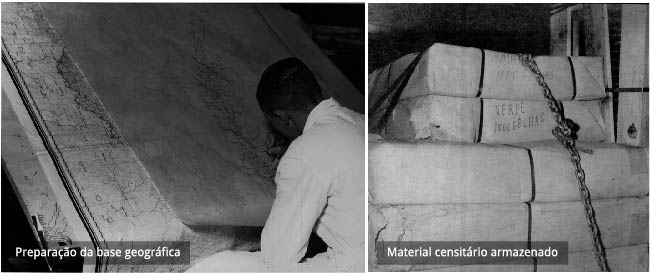
1950
INTEGRATION TO THE CENSUS OF THE AMERICAS
BRAZILIAN POPULATION
residents

Aiming at the development and comparability of official statistics, the 1950 General Enumeration integrated the Census of the Americas, subject to the UN. Each one of the nations engaged in this work would be in charge of their own enumeration and determine which general aspects would be covered, considering their own necessities and resources. There would be convergence in the use of certain basic norms regarding questionnaires, definitions and publication of results, in order to make possible the comparison of results.
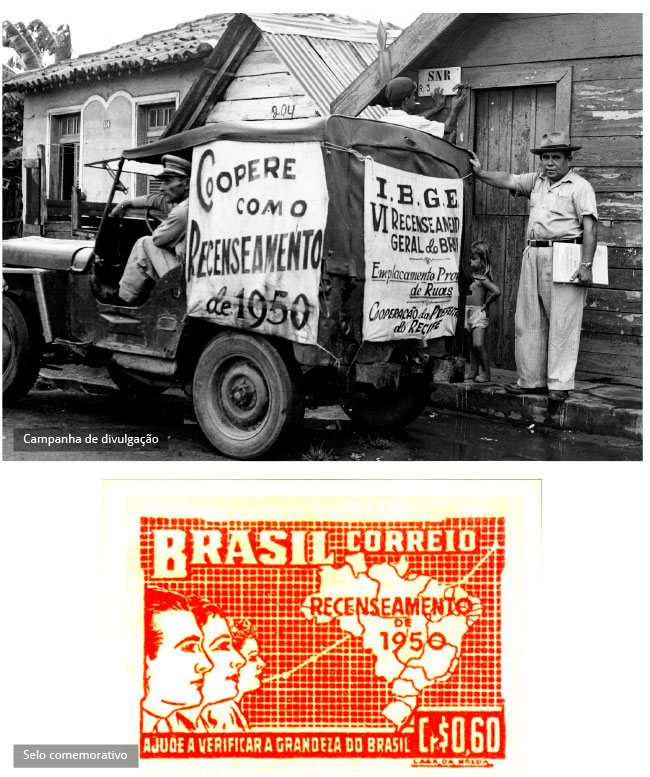

Census commissions were created in states and municipalities to help advertise the operation. Five census would be conducted, with different reference dates: population, agricultural, industrial, commercial and services. The number of items in the questionnaire fell from (1940) to 25.


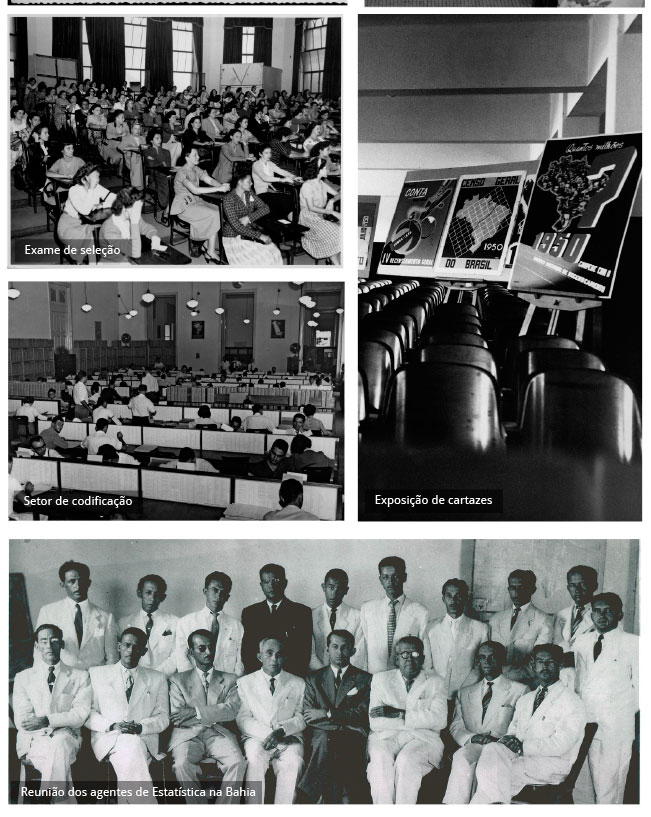
1960
ELECTRONIC BRAIN
BRAZILIAN POPULATION
residents

The 1960 General enumeration investigated, by means of nine items, the characteristics of persons and households. The following censuses were conducted: Population (persons, households and housing); Agricultural (agriculture, livestock and rural industry); Industrial (manufacturing and civil construction industries); and Commercial and Services (including trade of merchandise, services such as lodging and feeding and entertainment, radio and television broadcast).
That was the first Brazilian census to use the sampling technique. Some items, such as those relative to fertility, economic characteristics and to the household were surveyed in 25% of the households. Like in 1950, the Census was planned in association with international bodies, so as to enable future comparisons between countries. For the counting of data, the IBGE imported from the USA a massive computer, Univac 1105. With a total weight of more than 25 tonnes, it was called “the electronic brain”. A number of problems (heat, burnt valves) resulted in partial use of the equipment so that census data kept being added up by hand.

1970
NINETY MILLION IN ACTION
BRAZILIAN POPULATION
residents
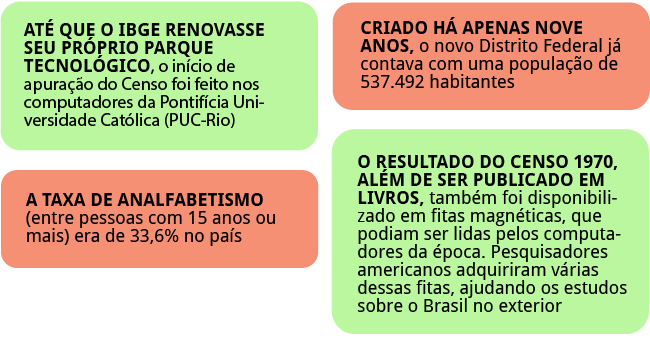
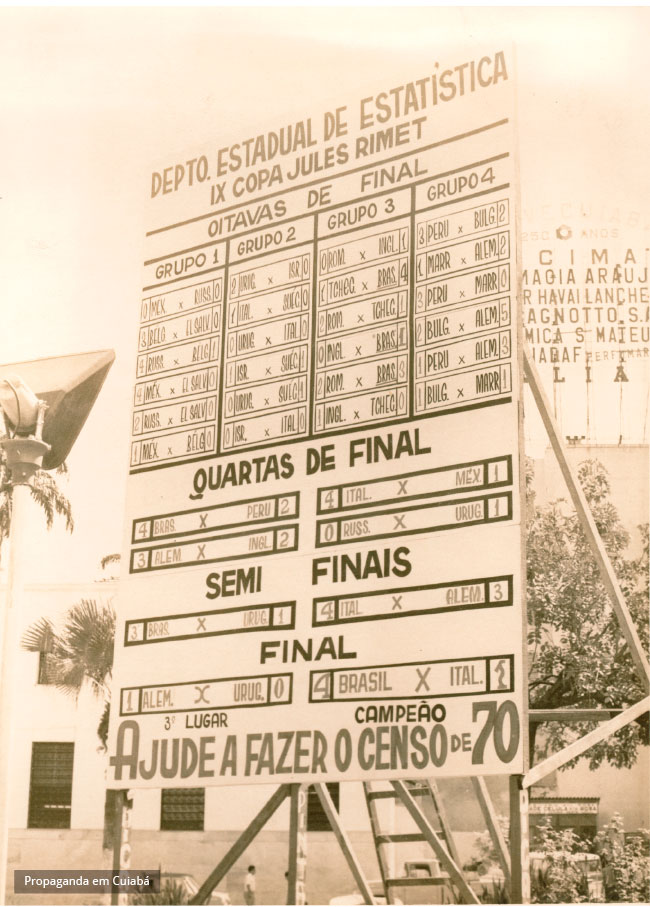
“Ninety million in action... Go forward, Brazil! Save our team!” The song that was our anthem in the 1970 World Cup almost hit the exact population of Brazil at the time: we were 94,508,583, according to the final result of the enumeration. Conducted in a period marked by soccer-motivated euphoria, the 1970 Census also brought changes to the IBGE. The Institute had left behind the inter-administrative cooperation model and was starting to design the internal structure it holds nowadays. During restructuring, the 1970 Census – population, industrial, agricultural and of trade and services – was organized.

Two themes had their relevance discussed: religion and color or race. The IBGE considered technical reports by specialist in both areas to decide if these two issues would become part of the Census. In the end, the theme “religion” was maintained, but “color or race” was removed, and would only be included in the following census, for good. The first population results came out in 1971, and, in the middle of the decade, the entire Census had been disclosed to society.

1980
A COUNTRY WE COUNT
BRAZILIAN POPULATION
residents
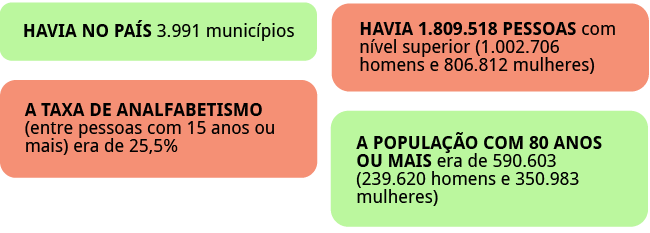
The slogan of the 1980 General Enumeration was “the country we count.“ One of the main innovations of the operation was the computerized system of data collection monitoring, which allowed the team to know, weekly, the number of sectors finished and persons enumerated. Five censuses were conducted: demographic, agricultural, industrial, commercial and services. There were also eight special surveys: construction industry; production and distribution of electricity; road, waterway, air and special transportation; financial institutions; insurance and capitalization; water supply and sewage disposal; urban sanitation and garbage disposal.

For the first time, the preliminary results of a census were released in the same year of the survey. The publication was divided into 129 volumes: Preliminary results (1 volume), Preliminary synopsis (25 volumes), Advanced tabulation (2 volumes), District data (23 volumes), General data, migration, schooling, fertility and mortality (26 volumes), Workforce (26 volumes), Families and households (26 volumes).
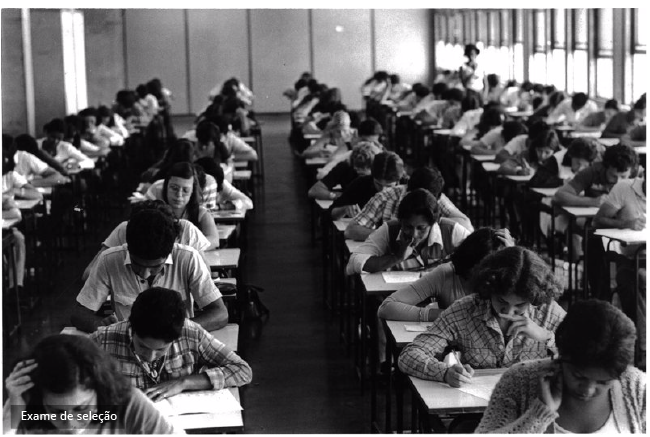
1991
PUBLICITY IN FLOPPY DISKS
BRAZILIAN POPULATION
residents

Planning of the 10th General Enumeration of Brazil started in 1987, but field work only took place in 1991, because it took the IBGE long to be allowed to hire temporary servants. So, the decennial census series, which had been built since 1940, was interrupted. With the slogan “Help Brazil have a good census,“ the operation brought new elements such as the Consulting Commission, the School Project and the release of results recorded in floppy disks.

The theme “physical impairment“ was surveyed once again, after being removed from the questionnaire in 1940. The results were released as 140 volumes, and covered the following issues: General Characteristics of the Population and Schooling; Migration; Nuptiality, Fertility and Mortality; Workforce; Families and households.

2000
IN THE ERA OF INNOVATION
BRAZILIAN POPULATION
residents

The 2000 Population Census was marked by technological innovation, such as digitation of questionnaires filled out by means of optical character recognition. But the data collection still used paper questionnaires filled out in pencil. A total of 200 thousand persons were hired, being 30 thousand of them as supervisors. August 1st was chosen as the reference date, in order to avoid a coincidence with the electoral period (municipal elections), and to be in accordance with Mercosur member countries, and with Chile e a Bolivia, whose censuses were conducted together, as requested by the UN from world nations at the turn of the millennium.

Preliminary results were released on December 21 in the same year, in Brasília. A strength was the publication in several media, such as CD-ROMs and DVDs with microdata.

2010
IMAGES OF THE NEW MILLENNIUM
BRAZILIAN POPULATION
residents
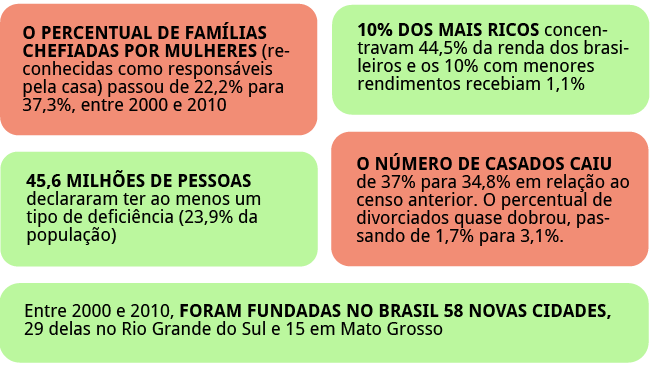
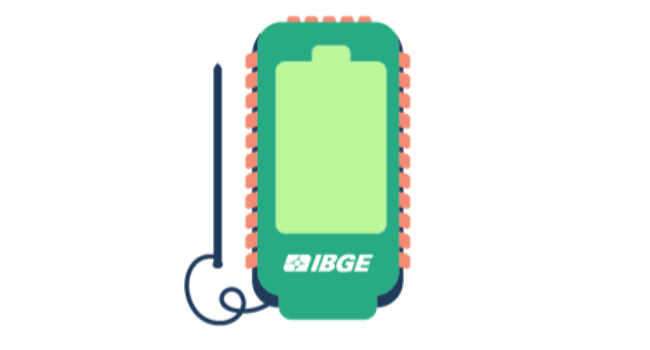
In the first census after the turn of the millennium, the paper questionnaire was entirely replaced with the electronic model developed for Personal Digital Assistants (PDAs), the handheld computer used by the enumerators. The PDAs were equipped with GPS containing digital maps with the addresses to be visited by the enumerators. This innovation was possible due to the unification and migration of the Territorial Base from an analogical into a digital mode. The questionnaire can also be answered on the Internet.
More than 190 thousand enumerators visited 67.6 million housing units in the 5,565 Brazilian municipalities. The first results were released in December of the same year. It was on Twitter that the IBGE had its first participation in social media.

